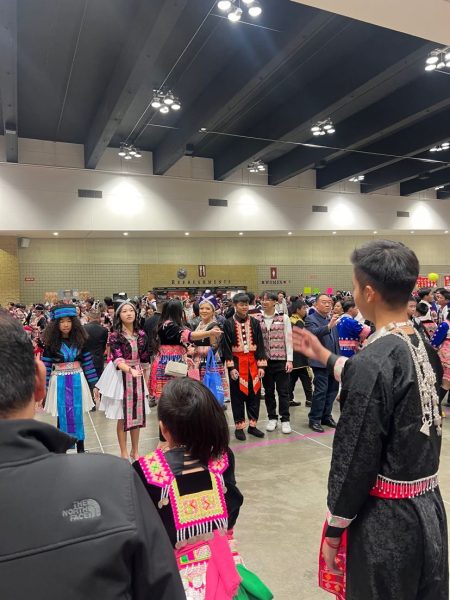With the holiday season well underway, storefronts are aglow with displays advertising the latest bargain. According to Forbes, consumer spending accounts for almost 70% of US economic activity, and holiday sales continue to rise, increasing by 7.6% in 2022 compared to the previous year. With gift-giving being such a significant component of the holiday season, what does it look like across different cultures and holidays?
Hanukkah, or the Festival of Rededication, is an eight-day holiday in Judaism that celebrates the cleaning and rededication of the Temple of Jerusalem following its defilement at the hands of the Syrian Greeks in 164 BCE. It is also known as the Festival of Lights, and most commonly takes place in December. Rabbinic tradition tells of a small amount of oil that burned for a miraculous eight days, and over the course of Hanukkah, one more candle is lit in the menorah each night until each one is burning by the end.
This year, Hanukkah runs from Dec. 7 to Dec. 15. As the holiday takes place around Christmas, gift-giving on Hanukkah became increasingly common in the 19th century. As marketers saw the opportunity to make a profit from the Christmas crowd in the 1840s, those who were Jewish were also caught up in the action of gift-giving. Thus, it is more of an American Jewish practice and is historically not part of the holiday. Instead, gifting is more so due to the intense commercialization of Christmas (which, likewise, does not include gift-giving as a significant part of the holiday’s origins). As opposed to Christmas, however, the length of Hanukkah leads to multiple smaller presents being gifted across the eight days.
“A lot of years my mom would get me little things of jewelry because it’s a smaller gift and my brother and I get my parents things like books or clothes that they wanted,” junior Liza Thomas said. “…I think because the holiday is eight days it has always been my favorite because it is less about the gifts and more about me connecting with my family, singing songs and prayers, and lighting the menorah,” she added.
One traditional commodity gifted on Hanukkah is gold foil-wrapped coins called gelt, which historically was considered an act of rebellion after the Maccabees defeated the Greeks and rebuilt the temple.
For Kwanzaa, on the other hand, gift-giving has more to do with the core values of the holiday. Kwanzaa was created by Dr. Maulana Karenga, a doctorate-holder in Political Science and Social Ethics who was searching for a way to bring together the African-American community. He combined aspects of different harvest holidays such as Ashanti and Zulu to create Kwanzaa. The holiday runs for seven nights, and is occurring this year from Dec. 26 to Jan. 1. Kwanzaa is celebrated with song and dance, African drums, storytelling, poetry reading, and a traditional feast. One candle is lit each night and one of the seven principles, or Nguzo Saba, is discussed. These principles, created by Karenga, are meant to reflect the values of African culture and build community.
The seventh day of Kwanzaa celebrates the principle of Imani (faith). The symbol for the seventh day is zwadi, or gifts. These gifts are given to encourage growth and self-determination and as awards for children’s success. Often, these gifts are skillfully handmade to avoid the buzz of holiday shopping and can include kinaras (candle holders), cards, and dolls. Accepting a gift on Kwanzaa cements social relationships and establishes a moral obligation.
Hmong New Year, or the “Noj Peb Caub” is considered the most important celebration in the Hmong calendar and is mostly celebrated in November and December for Hmong Americans, ranging from three days to a week long. It celebrates the start of a new year, gives thanks for the harvest, and honors the ancestors, who are often offered food. Additionally, for young people, Hmong New Year can be an opportunity to court each other through ball tossing, known as pov pob.

“Ball tossing is a way for Hmong guys and girls to get to know each other,” junior Serene Kalugdan said. Kalugdan attended the festival over the fall break.
“…A lot of Hmong people are trying to go to Hmong New Year to embrace their culture and preserve their heritage,” she said. “So now with Hmong New Year, you have more people doing traditional dances, or singing traditional songs, or ball tossing more often… they want to embrace their culture,” Kalugdan explained.
As far as gift-giving goes, “You get gifted an egg so that you never go hungry, and you get money usually,” she said.
Gift-giving is a component of many holidays and celebrations central to individual religions and cultures. Hanukkah, Kwanzaa and Christmas are only the beginning of a long list. However, how should gift-giving be approached when it is between different cultures?
Hsin-Yu Chen, a post-doctoral researcher at Pennsylvania State University, wrote about cross-cultural gift-giving as an opportunity for connection, though an inevitably delicate one at that. Chen recalled one incident of receiving a personalized clock from her American friend, and feeling “slightly uneasy.”
“In Chinese, the pronunciation of ‘giving a clock’ (送鐘song zhōng) is the same pronunciation that means ‘attending a funeral ritual’,” Chen said. Thus, clocks are considered an inappropriate gift in Chinese culture. Chen uses this example to urge the importance of researching the proper traditions and behavior involved in gift-giving, especially when it involves different cultures and the delicacies of such a situation. She also emphasizes the emotional aspect of gift-giving, and how the positive emotions involved in a gift exchange are what’s at its core.
“Because cultural norms are not static, sincere communication and interaction may be an important way to adapt to our multicultural world,” she said.
Though the gifts involved can vary, different cultures and religions have ways of participating in gift-giving through their respective winter celebrations that can provide insight into their histories and significance.